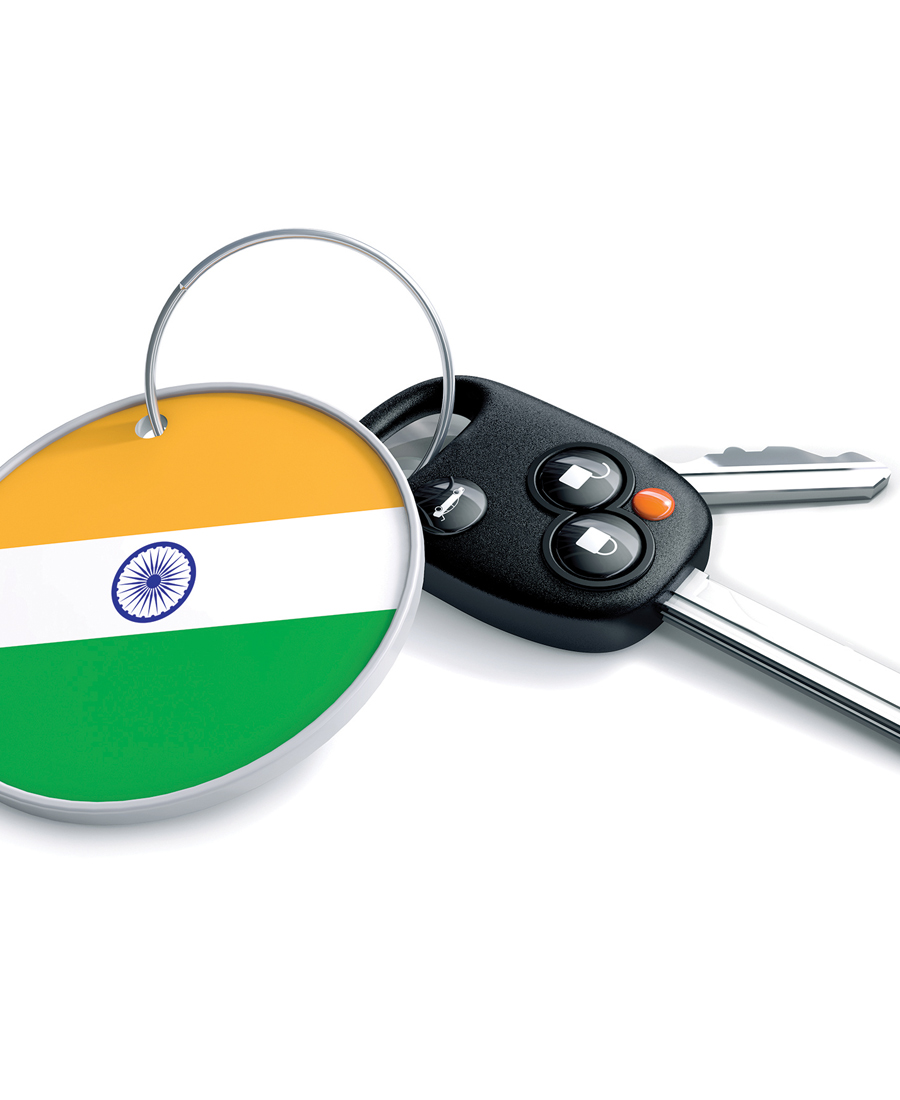ver the past five years, India has made significant progress in boosting its domestic economy and in attracting investment from around the world. The government’s “Made in India” campaign is focusing on 25 different industry sectors, including automobiles and automotive components, as part of its overall effort to improve India’s infrastructure, increase worker salaries and strengthen consumer spending. These efforts hold promise for the future of India as a destination market for producers everywhere.
In order to sell products in India compliance with certain regulations must be shown. Consequently, manufacturers and importers have to ensure that public safety, automotive, wireless and telecommunication standards are met.
Throughout the last decades the Indian government developed and announced the following certification requirements:
- Automotive Industry Standard (AIS) for vehicles and automotive components
- Bureau of Indian Standards (BIS) certification for electrical equipment
- Wireless Planning and Coordination (WPC) certification for wireless products
- Telecommunication Engineering Center (TEC) certification for telecommunication and IT
The Ministry of Road Transport and Highways (MoRT&H) is the responsible governmental body for issues concerning transportation and traffic administration. In this function, it also ratifies the corresponding laws and regulations. In 1988 the Indian parliament ratified the Motor Vehicles Act which describes the general regulation requirements for vehicles. One year later in 1989, the Central Motor Vehicles Rules (CMVR) became effective and are responsible for the regulations of the Automotive Industry Standard (AIS).
There are different entities which are accredited and authorized to conduct product testing and certifications as described in the AIS:
- Automotive Research Association of India (ARAI)
- Automotive Component Manufacturers Association of India (ACMA)
- International Centre for Automotive Technology (ICAT)
The actual implementation of the certification scheme occurs in several phases and will likely continue to be expanded in the future (see the table).
Similar to other product certifications, the AIS certification consists of five steps including the submission of application documents, a factory inspection, product tests, the issuance of the certificate and the marking of the product.
In a first step, the application documents must be prepared prior to submission to the respective authority. It is very important that all information on the documents is correctly filled out and complete.
In a second step the factory inspection can be scheduled. It is usually performed by one auditor from the subsequent Indian authority (e.g. ARAI) and will take one or two days. The purpose of the factory audit is to inspect the manufacturing plant’s quality management system and confirm its compliance with the certification guidelines and regulations. The inspection is conducted with the use of checklists based on international quality management guidelines.
Furthermore, product tests as described in the appropriate standard must be conducted. Normally, testing is required to be performed at one of the accredited testing laboratories in India. In certain cases, it might be possible to have other test reports accepted. This, however, always requires an individual check.
As soon as the factory audit and the product testing have been completed successfully, the Type Approval certificate will be issued. From this point forward, the product may be marked with the manufacturer’s name, a unique ID code and the Type Approval number. Based on the relevant standard, the application of a mark can be required. The location of the label is at discretion of the manufacturer.
In order to maintain the validity of this certification, a follow-up factory inspection is required every two years. In addition, product tests according to CoP lists must be conducted in India.
Forming India’s largest certification scheme, the BIS certification is mainly mandatory for electronic and IT products such as laptops, printers, mobile phones, but also products such as cement and steel. The list of products required to be registered is subject to constant changes and extensions. Most recently on July 22, 2019 the Indian Ministry of Steel announced extensions of the certification scheme for steel products, most becoming effective immediately. Therefore, it is important to stay informed about the current announcements.
- Safety Glass
- Brake Hose
- Horn
- Tire
- CNG Regulator
- LPG Vaporizer & Regulator
- Bulb
- Speed Limiting Devices
- Seat Belt
- Wheels (M/N Category)
- Luminaires (M/N Category)
- Retro Reflectors (M/N Category)
- Warning Triangle
- Signaling Devices (L Category)
- Retro Reflectors (L Category)
- Retro Reflectors (Tractors & CEVs)
- Luminaires (Tractors & CEVs)
- Door Locks/Retention Components
- Fuel Tanks
- Reflective Tapes
- Rear Warning Triangles
- LED Light Bulbs (replaceable)
- Wheels (L Category)
- Rear Marking Plate
- Wiper Blades
- Battery (Lead Acid)
The consistency of information on application documents is crucial. It is also very important that all application documents be complete and filled out correctly.
Several test laboratories in India are accredited to carry out the product testing. CB reports are normally not accepted. After successful completion of the testing the test reports must be submitted to the responsible authority within 90 days by an authorized Indian representative.
There are two different markings for the BIS certification: The Standard Mark and the ISI Mark. Depending on the product to be certified, the manufacturer has to use either one or the other. The latter also applies for certain voluntary certifications.
At the current time, there is no factory inspection required, but this could change in the near future. The BIS certification usually covers all products manufactured by a factory and can be renewed after two years if there haven’t been any changes. The Ministry of Electronics and Information Technology (MeitY) may ask for random sample tests, which must be tested at a randomly assigned test lab. Within 15 business days the tests must be arranged and the reports submitted to MeitY when completed.
It is also possible that the BIS certification will be required for certain components of products (for example, batteries). In such a case, the component certification needs to be completed before the process of the actual product certification can be started.
All wireless devices, such as WIFI, ZigBee or Bluetooth require a WPC certification. For products that already have a WPC approved wireless module, no additional testing of the final product is required. All other products will have to be fully tested, unless there are test reports from ILAC accredited laboratories outside of India available and the devices do not use any restricted frequency ranges.
The certification process consists of the submission of application documents, evaluation and product testing. After completion and acceptance of the WPC certificate, a certification number will be issued. According to the status quo, no factory inspection is demanded and as long as there are no changes on the hardware, the certificate does not expire.
Besides the WPC certification the Telecommunication Engineering Center (TEC) certification for telecommunication equipment, such as mobile phones, telephone systems or modems, plays an important role in the field of certifications for the Indian market.
TEC certification was established in the early 1990s and up until recently had been a voluntary process. However, in their announcement No. 10-1/2017-IT/TEC/ER, the TEC shifted the process to an obligatory certification process with the roll-out of the Mandatory Testing Certification of Telecommunication Equipment (MTCTE).The implementation will take place in several steps, starting with the first phase rolling out October 1, 2019. The following phases will most likely cover products like routers, network security systems and servers.
Up until recently the products that are included in the certification scheme had to meet the requirements of electromagnetic compatibility (EMC/EMI). It is still under consideration if safety tests will be added. It is expected that the TEC certification will have a validity of five years and cover up to ten product models per certificate. The marking will consist of an individual factory ID number and has to be applied to the product.
Currently, reports of international accredited test laboratories (ILAC) are still accepted. After March 31, 2020 testing will have to be completed in India.
Therefore, it is key to success to be informed on the development and keep an eye on the latest trends in the Indian market to stay in compliance with the most current rules and regulations. As stated in the beginning of this article, the Indian market shows interesting and growing tendencies and may offer great potential if PM Modi’s promises will fully put into practice.

